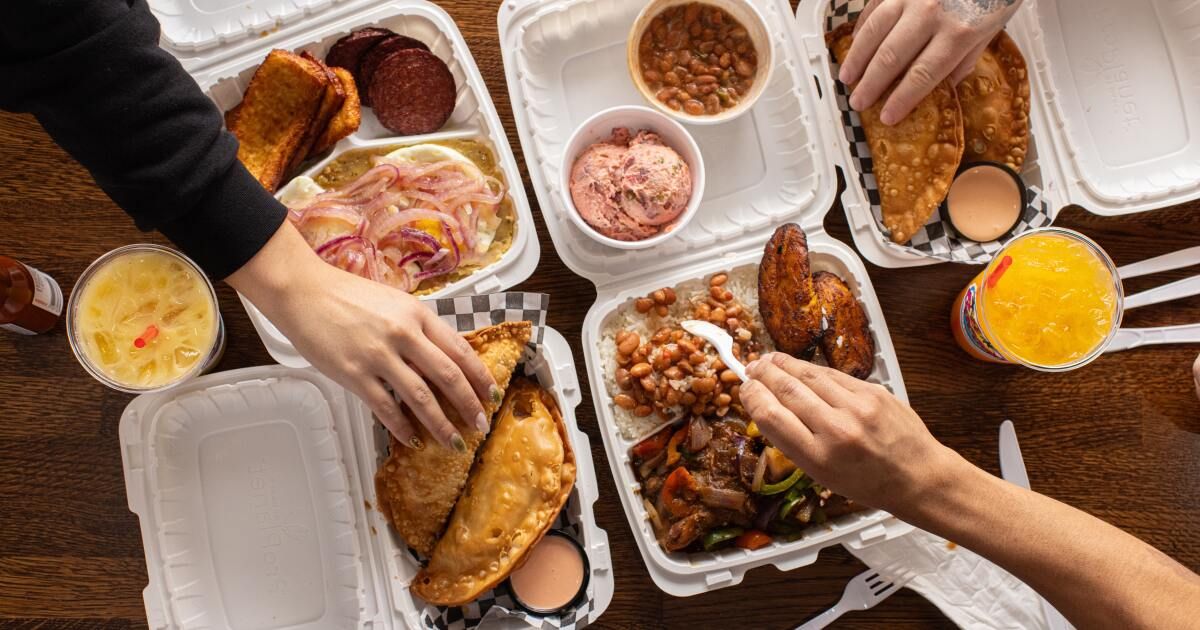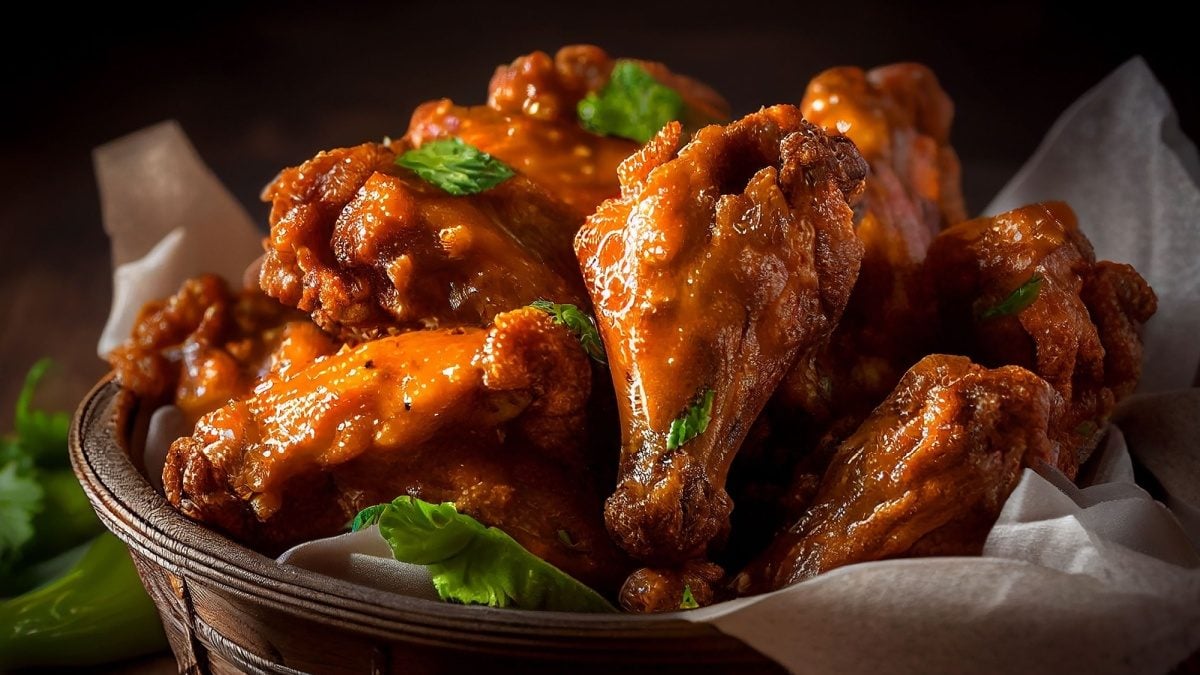Jonathan Santana opened the only traditional Dominican restaurant in the Los Angeles area last summer. However, he was a teenager in the 2000s when he first considered that his family's recipes could be the basis of a business.
Among eight siblings, his mother, María (nicknamed “Machi”), was known as the one with the golden hands on the stove. Jonathan's friends would come over after school, expecting Machi's flaky empanadas or fragrant stewed chicken. They loved her food so much that when she wasn't around them, they didn't joke about her willingness to pay him to cook.
The family lived in Anchorage. They moved there when Jonathan was 5 years old, shortly after his maternal grandparents sponsored the family's immigration to New York from the Dominican Republic. Other aunts and cousins had already moved to Anchorage for job opportunities and the relatively low cost of living.
In 2010, the Santanas took the entrepreneurial leap by launching Nina's in a Box, named after Machi's mother and the squat trailer they operated out of. Deany, Machi and Jonathan's older sister, ran the kitchen; Jonathan and other family members helped where needed. Their menu included chicken, soaked in soy-based marinade and then stewed or fried, with rice and plantains, and pork chops with similar flavors, and occasionally a highly spiced burger topped with shredded cabbage for a slightly crunchy touch.
Nina raced for four years in Anchorage. Jonathan cites the harsh Alaskan winters, working hard on a thin-walled structure, as one of the main reasons they all eventually wanted to move on.
Almost a decade later, history began to repeat itself. Jonathan was spending time with friends in Los Angeles. He cooked the family recipes and people mentioned that they were dishes for which they spent money.
The Santanas moved from the Dominican Republic to Anchorage, where they owned a restaurant called Nina's in a Box, before moving to Los Angeles.
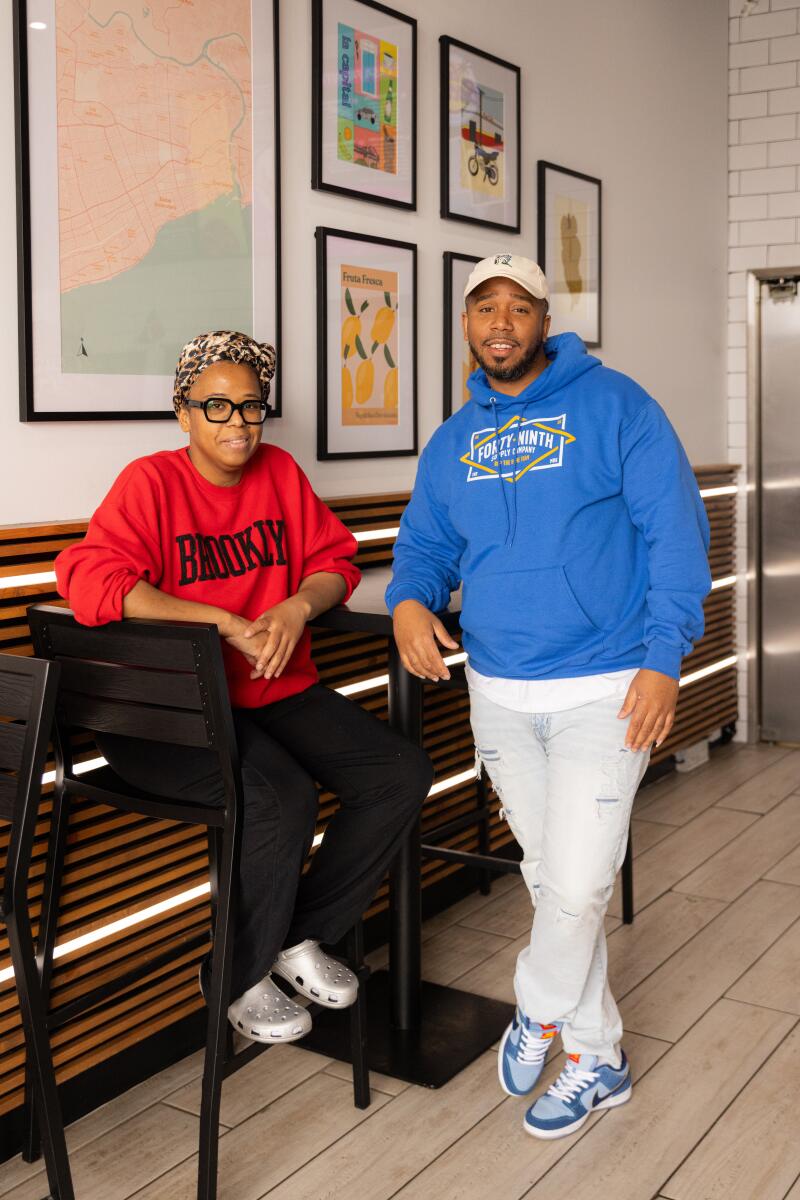
Deany and Jonathan Santana decided to open El Bacano to share their family's recipes.
He also asked: Where were the Dominican restaurants in Los Angeles? Weekly pop-ups like El Coro Café in Glendale and Dominicans, based just outside of downtown, represent the cuisine, and a food truck specializing in Dominican cuisine called Karibbean Cuisine is located in Mid-City. Jonathan envisioned a brick-and-mortar location with a few tables, primarily focused on takeout, and that felt well insulated from the climate, even if the climates of Southern California and the Alaska Peninsula couldn't be more different.
Jonathan recruited Deany as a chef for the project. In August, the brothers began the next chapter in the family's restaurant lineage with the 16-seat El Bacano in a North Hollywood shopping center.
They open their doors at noon but serve a quintessential Dominican breakfast that is justly comforting at any time of the day: mangú (mashed bananas) with the three hits: two fried eggs, slices of grilled salami and thin rectangles of fried cheese. An employee will ask if he prefers green or ripe bananas, and my answer is what the Santanas recommend: a mix of the two.
Their combined consistency is both soft and smooth in texture, and the flavor leans slightly towards sweetness, although the slivers of pickled onion scattered on top bring the overall flavors back to savory. The yolks run, if you order the over-easy eggs, the speckled salami has cracked and the cheese squeaks a little between your teeth.
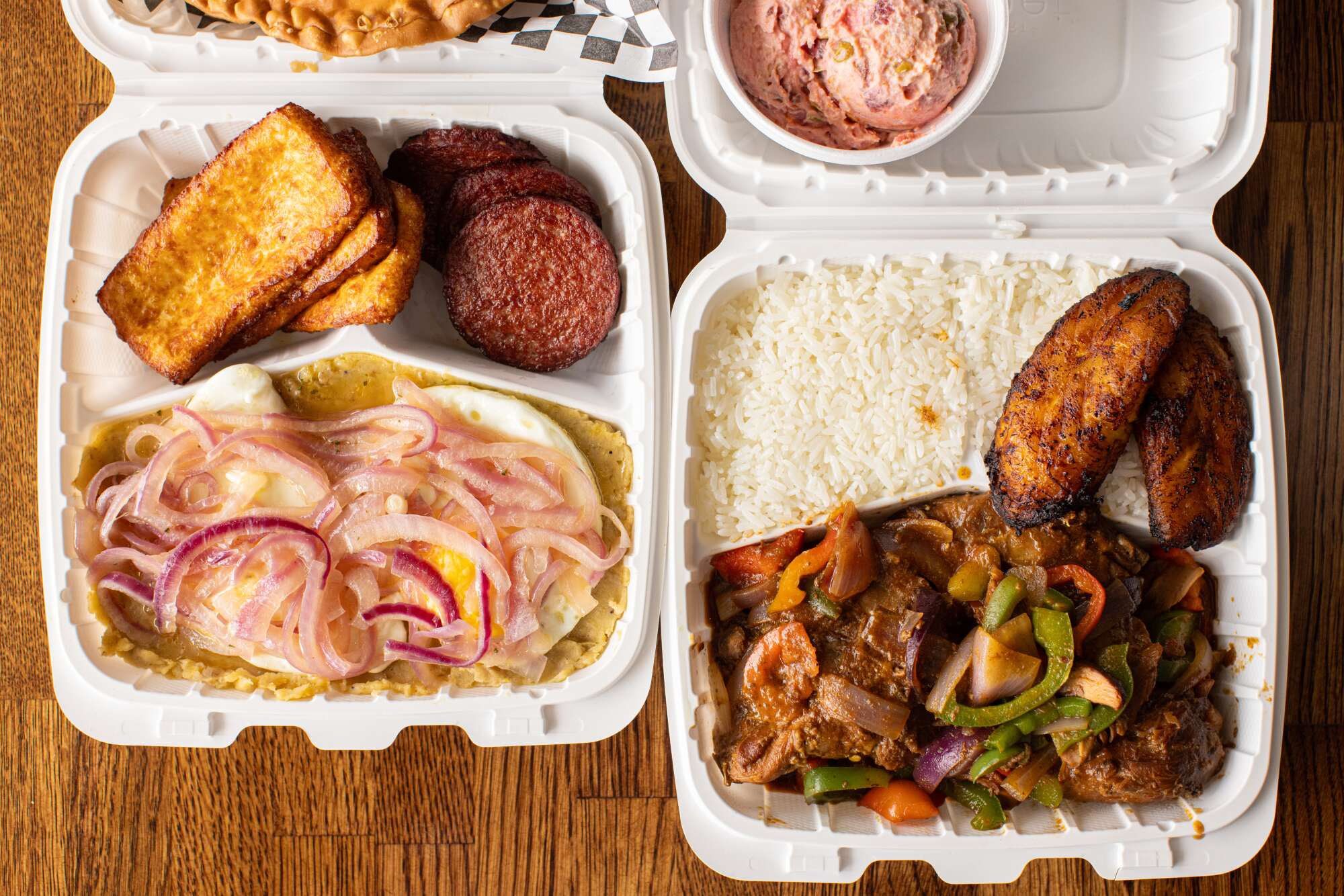
Breakfast can come with all three hits: two fried eggs, slices of grilled salami and thin rectangles of fried cheese. The stewed chicken is richly browned and then simmered with thinly sliced peppers.
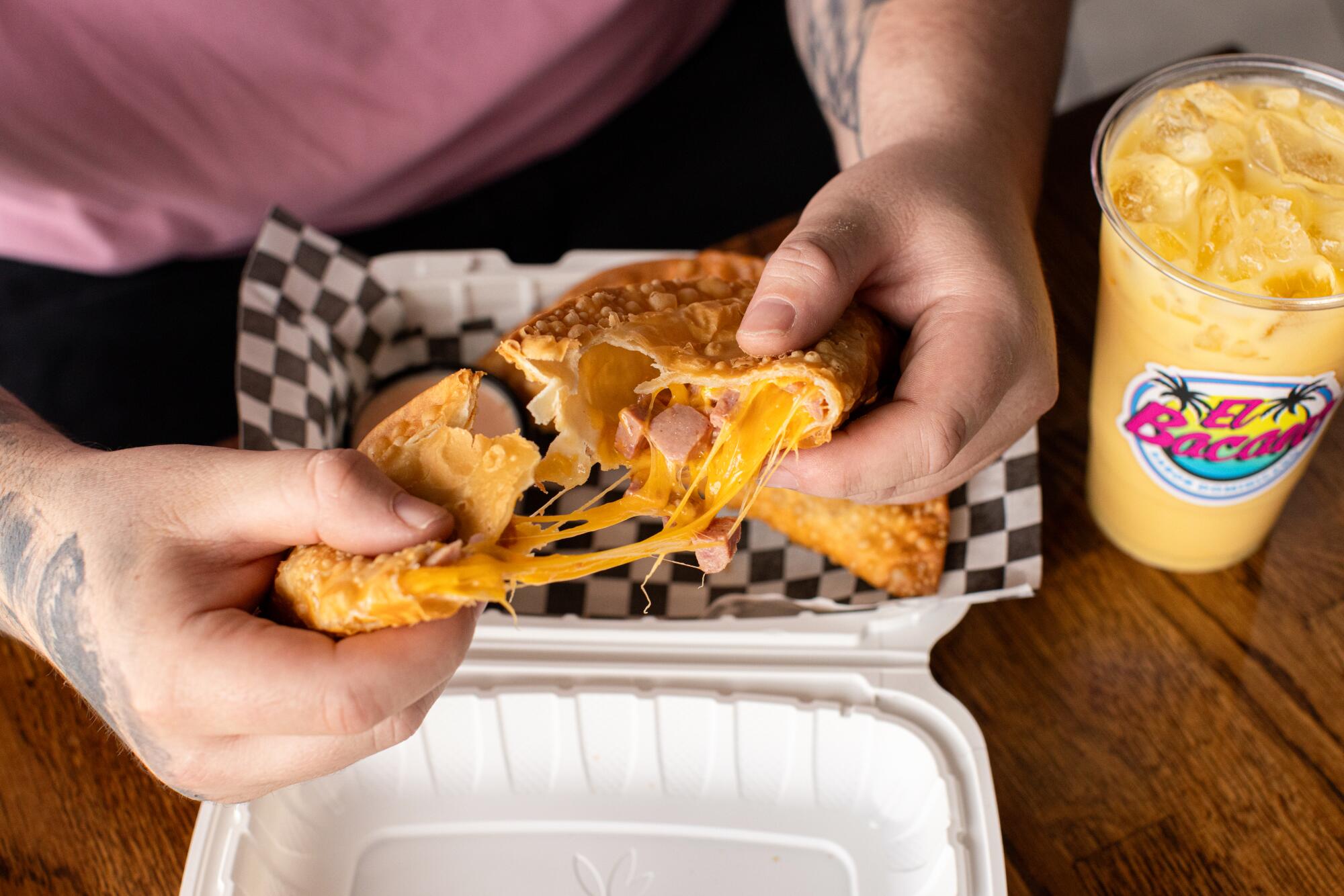
The Santanas' flaky empanadas at El Bacano, filled with salami and cheese.
It's also possible at El Bacano to order mangú accompanied by other meats on the menu in ways reminiscent of how Puerto Ricans typically serve their main dish, mofongo: green plantains usually fried and mashed into a garlicky puree. Mangú with the three hits is a national signature for Dominicans; Start here as an entry point.
Furthermore, the meats deserve their own prominence, and a less flashy rice background frames them perfectly.
Most come from the marinade that Nina's menu was also built on: an infusion of lime juice, onion, garlic, oregano and other spices. I'm especially partial to Santana's chicken, Jonathan's rebranding of the classic Dominican stewed chicken. The bird is richly browned (the brothers don't reveal any of their family secrets, but a common technique is to add sugar to the oil to achieve such depth of color) and then simmered with thinly sliced peppers in a little. of liquid that forms a broth. , powerful sauce.

The bright floral wallpaper from El Bacano.
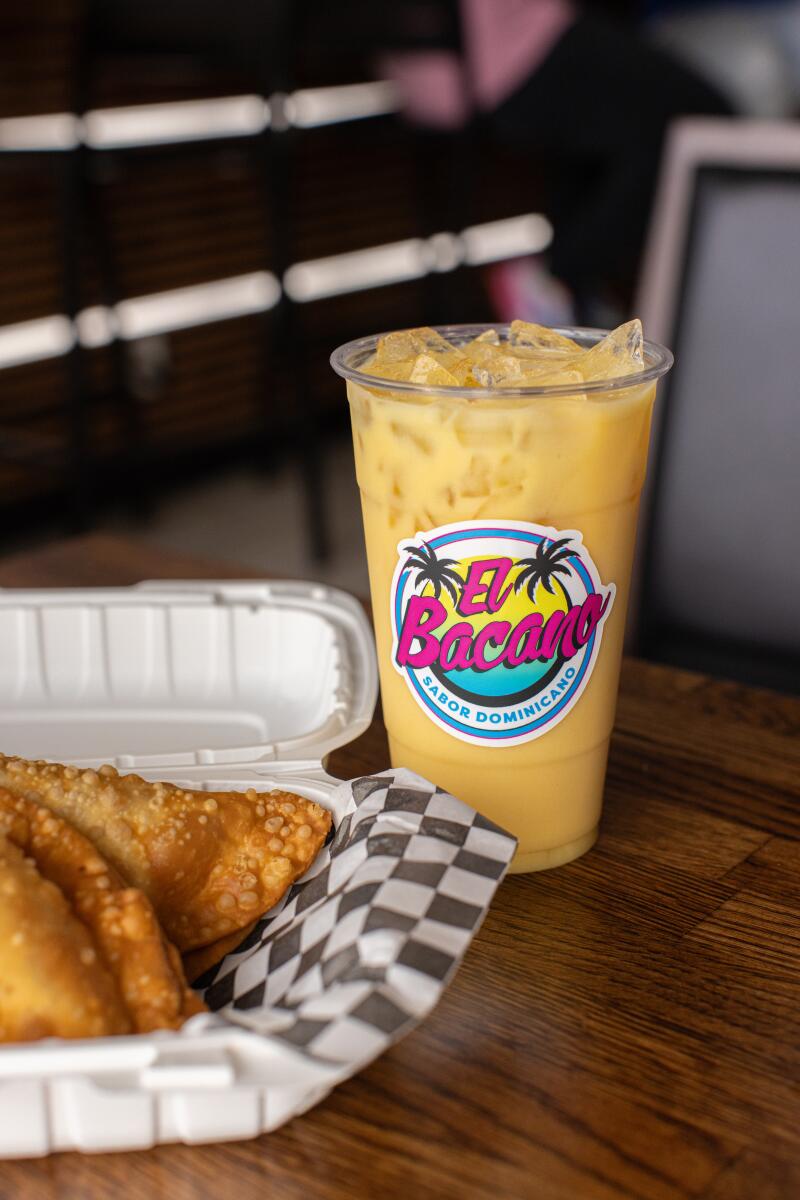
Dying Sounding, a blend of citrus juice and milk, is an iconic drink.
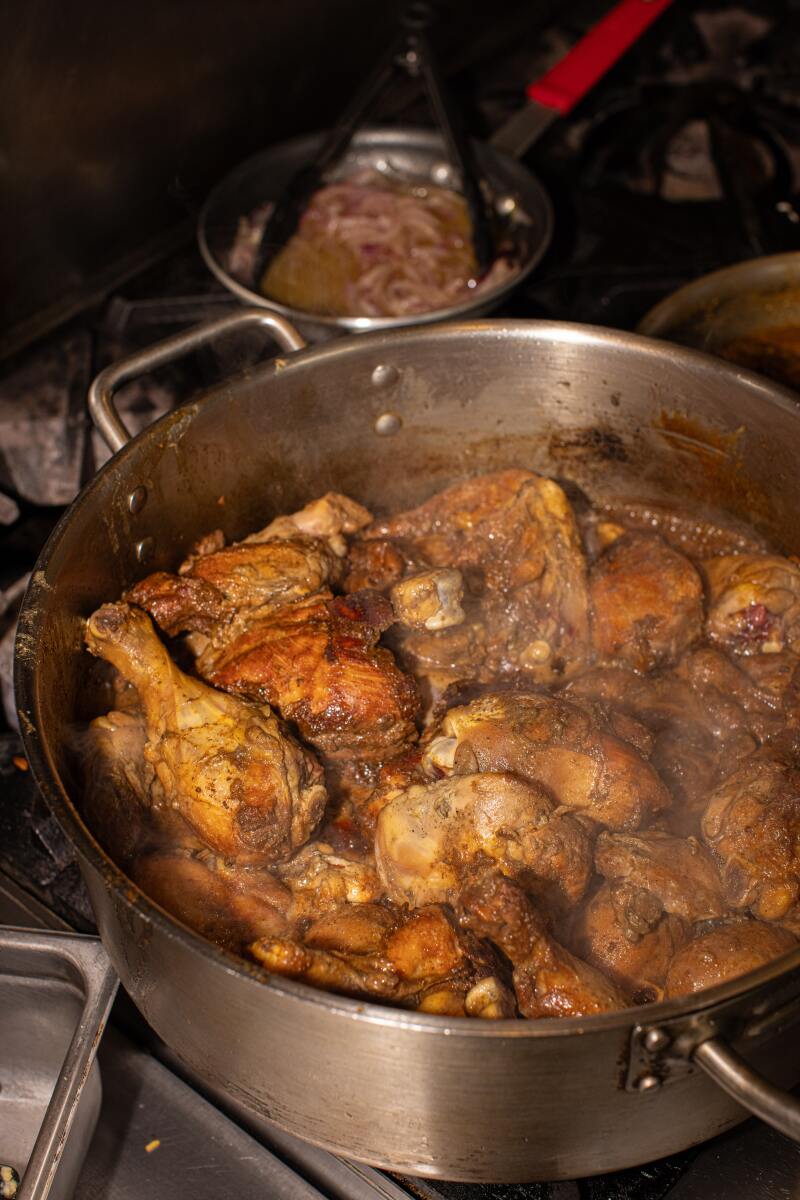
Santana's chicken is Jonathan's change of name to the classic Dominican stewed chicken. The boiling liquid forms a powerful, brothy sauce.
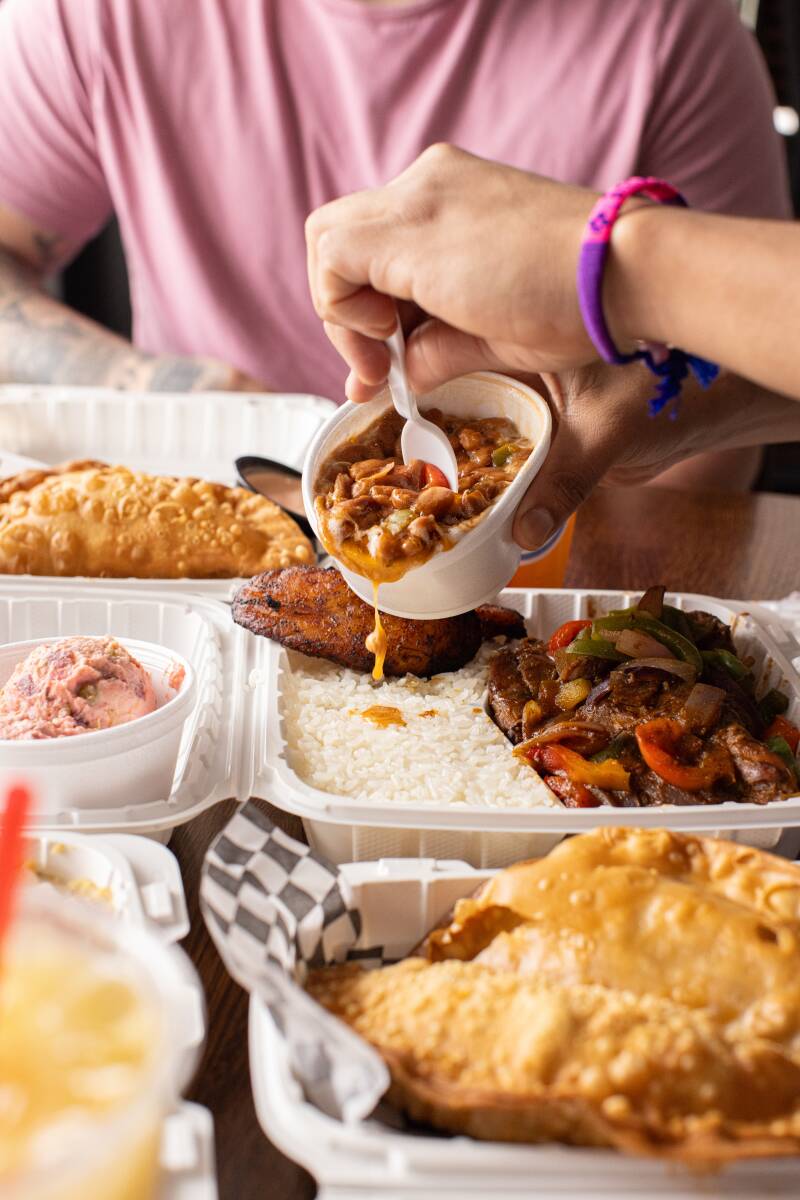
The dishes come with soupy beans and white rice. You can upgrade to moros, an abbreviation of “moors and Christians,” rice and beans cooked together.
Chicken feet are usually part of the dish. Fully braised meat practically falls off the bone on its own.
Like most main dishes, the dish comes with a small salad, soupy beans, and white rice. For a $2 upcharge, one can upgrade to moros, an abbreviation for “Moors and Christians,” rice and beans cooked together, which refers to 700 years of conflict between Moors and Christians in Spain that began in the 8th century. The culinary term is common in all Caribbean-Latin cultures and is a direct reflection of Spanish colonization. Deany makes several variations, using black or red beans or pigeon peas and sometimes dyed with tomato paste, which change throughout the week. I appreciate its subtle layers of seasoning.
I would also recommend La Bandera, marinated and braised beef with the exuberance of a barbecue. Its name refers to a ubiquitous Dominican dish of beans, rice and meat that (with some creative license) recalls the red, white and blue colors of the national flag.
Avocado upsets the patriotic palate, but it's a staple part of Dominican meals, and the staff at El Bacano will ask you at least once if you'd like a side. Its silky charms blend everywhere: against the crunch of fried chicken; It slid under the bun of the cabbage-covered hamburger smeared with mayonnaise and ketchup; or mashed with rice that traps the tomato juices from the sautéed cod.
A few welcome slices also lighten the weight of the sancocho, another Dominican signature. Cuts of pork, beef, and chicken are mixed in a stew with plantains, corn on the cob, winter squash, and yautía, a tuber sometimes called taro. The spices are sober and the flavors simple. During the last few weeks of rain in Los Angeles, sancocho has warmed me greatly, especially with generous and refreshing shots of hot sauce. The restaurant displays three brands on its tables.
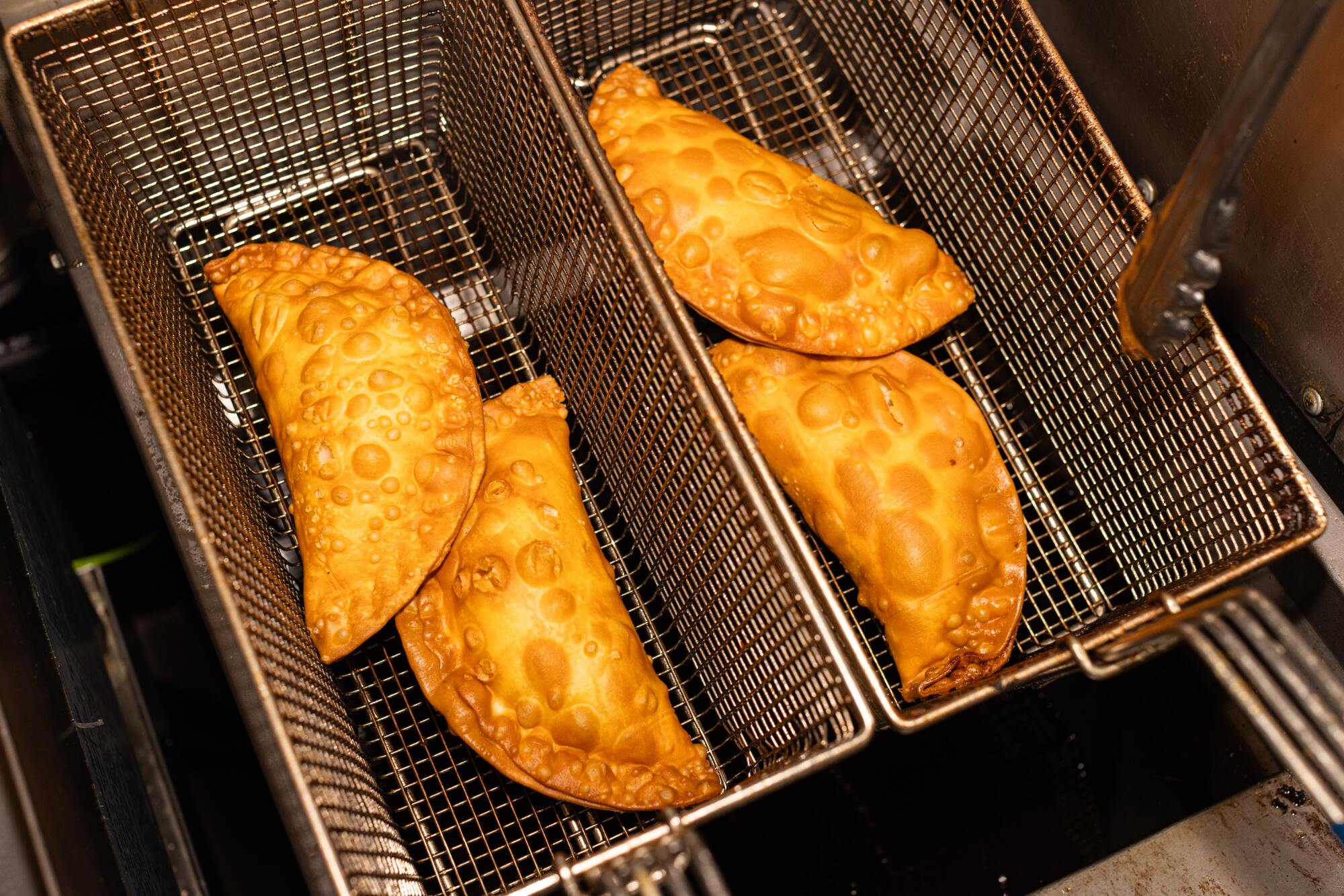
Jonathan Santana says he hopes to open a second El Bacano location in a larger space. For now, he finds family empanadas at their 16-seat restaurant in North Hollywood.
My only major complaint: Whether you're bringing food or eating in the dining room, El Bacano serves everything in to-go containers. The sancocho should be spooned out of a suitable bowl, and the meaty juices from the stewed chicken should bleed into the rice instead of getting trapped in a Styrofoam compartment. Food travels well, so I have started taking food home and preparing dishes to enjoy it better.
Jonathan talks about expecting a diverse clientele during the restaurant's first year, but is pleasantly surprised that Dominicans drive from all over the region, grateful and nostalgic for the smells and flavors. “Things are going well, so I hope to open a second location with double the space and a bar where we can serve Dominican liquors,” he says.
When the next time happens, he assures me that he will invest in tableware according to his mother's recipes.
The Bacano
13009 Victory Blvd., North Hollywood, (818) 210-0026, elbacano.com
Prices: Most entrees are $16 to $20, empanadas are $3 to $5, and sandwiches are $12 to $15.
Details: Open from noon to 9 pm Tuesday to Sunday. Non-alcoholic (although try the sweet and sour tamarind juice). Lot parking.
Recommended dishes: Mangú with the three hits, Santana chicken (stewed chicken), La Bandera, shredded chicken empanadas or salami and cheese, sancocho (available on Tuesdays, Thursdays and Saturdays), stewed cod.

